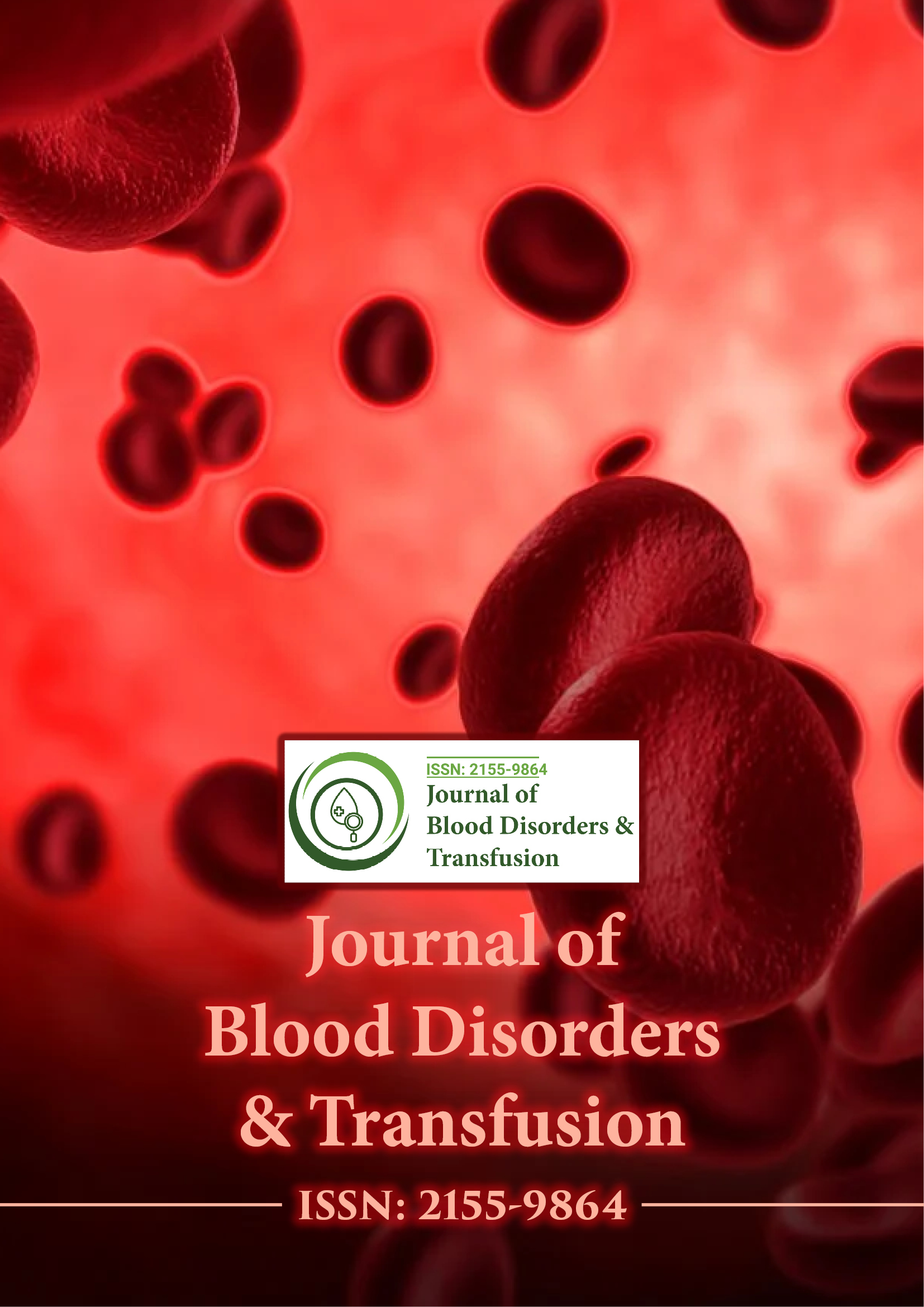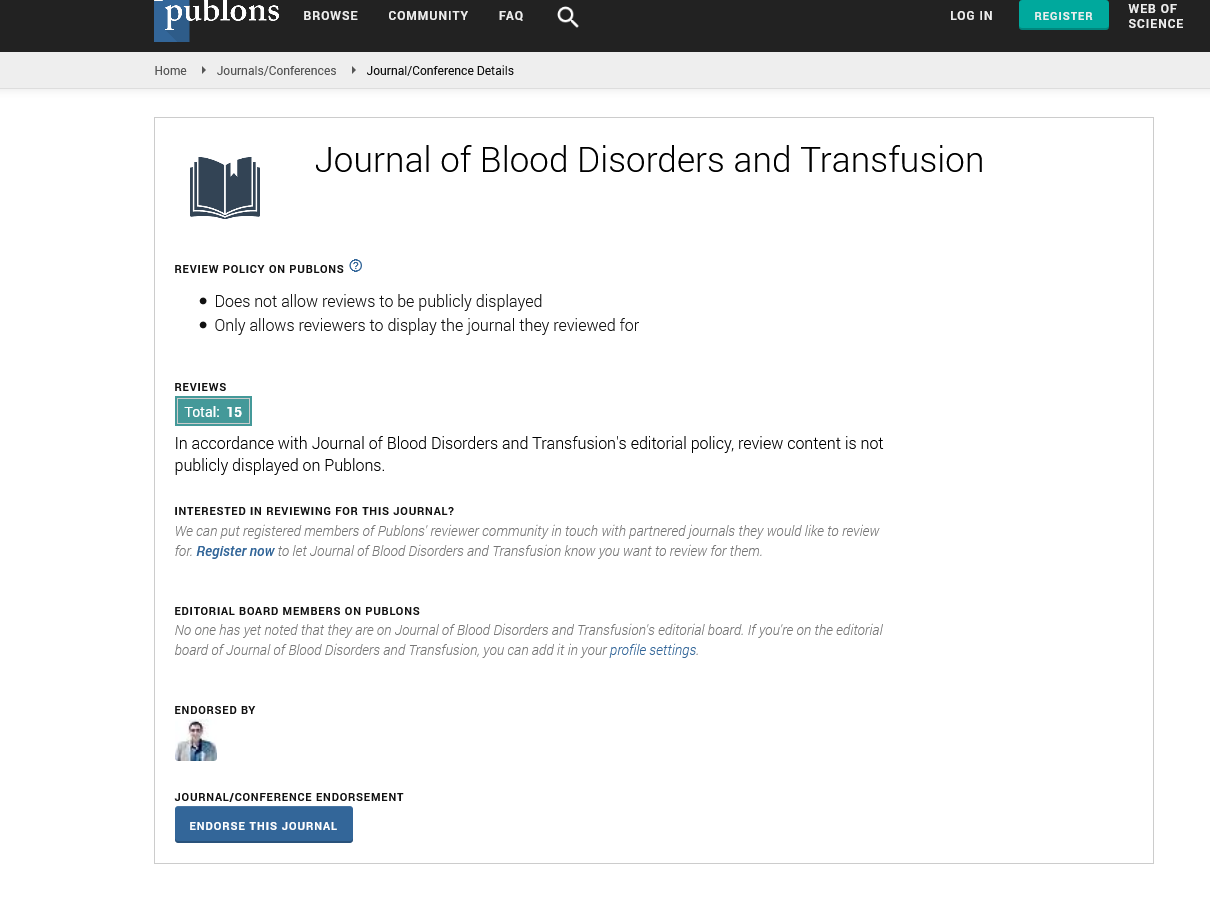Indexed In
- Open J Gate
- Genamics JournalSeek
- JournalTOCs
- Ulrich's Periodicals Directory
- RefSeek
- Hamdard University
- EBSCO A-Z
- OCLC- WorldCat
- Proquest Summons
- Publons
- Geneva Foundation for Medical Education and Research
- Euro Pub
- Google Scholar
Useful Links
Share This Page
Journal Flyer

Open Access Journals
- Agri and Aquaculture
- Biochemistry
- Bioinformatics & Systems Biology
- Business & Management
- Chemistry
- Clinical Sciences
- Engineering
- Food & Nutrition
- General Science
- Genetics & Molecular Biology
- Immunology & Microbiology
- Medical Sciences
- Neuroscience & Psychology
- Nursing & Health Care
- Pharmaceutical Sciences
Perspective - (2024) Volume 0, Issue 0
The Impact of ABO Hemolytic Disease on Infants and Early Detection and Management
Jain Chug*Received: 26-Jul-2024, Manuscript No. JBDT-24-26840; Editor assigned: 30-Jul-2024, Pre QC No. JBDT-24-26840 (PQ); Reviewed: 14-Aug-2024, QC No. JBDT-24-26840; Revised: 21-Aug-2024, Manuscript No. JBDT-24-26840 (R); Published: 29-Aug-2024, DOI: 10.4172/2155-9864.24.S10.049
Description
The Impact of ABO hemolytic disease on newborns early detection and management is a topic of critical importance for healthcare providers and parents alike. ABO hemolytic disease occurs when there is an incompatibility between the blood types of the mother and baby, leading to the baby's red blood cells being attacked by the mother's antibodies. This can result in anemia, jaundice, and other serious health issues if not promptly managed. The impact of ABO hemolytic disease on newborns can vary widely, from mild to severe symptoms. Early detection through prenatal testing and vigilant monitoring is key to preventing complications. Healthcare providers often use blood tests to identify at-risk pregnancies and plan for potential interventions. Managing the condition involves careful monitoring of the infant's bilirubin levels and administering treatments like phototherapy or, in more severe cases, blood transfusions. Newborns suffering from ABO hemolytic disease are at risk of developing long-term health issues if the condition is not properly managed. These can include developmental delays and neurological complications. Therefore, early intervention and appropriate management strategies are essential in mitigating these risks. Parents should be educated on the signs of ABO hemolytic disease and the importance of regular check-ups during pregnancy and after birth. In conclusion, the impact of ABO hemolytic disease on newborns underscores the necessity for early detection and effective management. By understanding the risks and implementing timely interventions, healthcare providers can significantly improve the health outcomes for affected infants. Education and awareness are vital components in the fight against this condition, ensuring that both parents and healthcare providers are equipped to handle the challenges it presents.
Causes and risk factors the impact of ABO hemolytic disease on newborns is early detection and management is essential for ensuring optimal infant health and development. ABO hemolytic disease occurs when there is an incompatibility between the blood types of the mother and the baby. This typically happens when a mother with blood type O has a baby with blood type A, B, or AB. The mother's immune system may produce antibodies against the baby's red blood cells, leading to their destruction and causing hemolytic anemia in the newborn. There are several risk factors associated with ABO Hemolytic Disease. One significant factor is the blood type of the parents, specifically an O blood type mother paired with an A, B, or AB blood type father. Another risk factor includes a history of previous pregnancies where ABO incompatibility was present, as the mother's immune system may have been sensitized during earlier pregnancies. Additionally, conditions such as certain infections, trauma, or invasive procedures during pregnancy can increase the likelihood of antibody formation.
Prenatal screening tests, such as blood type and antibody screening, can help to identify the risk of hemolytic disease before birth. Monitoring bilirubin levels in newborns is also critical, as elevated levels can indicate hemolysis. Effective management strategies include phototherapy for jaundice and, in severe cases, exchange transfusions to replace the baby's damaged red blood cells. Understanding the causes and risk factors of ABO Hemolytic Disease is essential for healthcare providers and parents alike.
Impact of ABO hemolytic disease on newborns
Early Detection and Management, we can improve outcomes for affected infants and support their health and development. Comprehensive prenatal care and vigilant postnatal monitoring are key components of managing this condition effectively. The impact of ABO hemolytic disease on newborns early detection and management is crucial for ensuring the health and well-being of affected infants. Understanding the symptoms and accurate diagnosis of this condition can significantly influence the management strategies and outcomes for newborns.
Recognizing symptoms of newborns with ABO hemolytic disease often exhibit signs that may include jaundice, pallor, lethargy, and poor feeding. Jaundice, characterized by a yellowing of the skin and eyes, is one of the most common symptoms. It results from the elevated levels of bilirubin, a by-product of red blood cell breakdown. Early detection of these symptoms can prompt timely medical intervention, which is essential for preventing complications. Diagnostic of ABO hemolytic disease involves a series of blood tests. The primary diagnostic tool is the direct coombs test, which identifies antibodies bound to the surface of red blood cells. Additionally, a Complete Blood Count (CBC) can help assess the degree of anemia, while bilirubin levels are measured to gauge the severity of jaundice. In some cases, blood type incompatibility between the mother and newborn is confirmed through blood typing. Importance of ABO early detection and management highlights the significance of prompt diagnosis. Early identification allows for immediate treatment, which may include phototherapy to reduce bilirubin levels or, in severe cases, blood transfusions to replace damaged red blood cells. Recognizing and addressing symptoms early can prevent long-term health issues and developmental delays associated with untreated ABO hemolytic disease. In conclusion, the early detection and management of ABO hemolytic disease are imperative for mitigating its impact on newborns. By being vigilant about the symptoms and utilizing appropriate diagnostic procedures, healthcare providers can ensure better health outcomes for affected infants.
Parental advise and preventative actions about the effects of ABO hemolytic disease on newborns. Early detection and Management cannot be overstated, as timely interventions are crucial in mitigating potential health issues. Preventative measures and proper parental guidance play a pivotal role in ensuring the well-being of infants at risk.
Early detection is most important in managing the impact of ABO hemolytic disease on newborns. Regular prenatal screenings can identify risk factors, enabling healthcare providers to prepare for potential complications. Parents should be informed about the importance of these screenings and encouraged to adhere to prenatal care schedules. Parental education is a key aspect of parental guidance. Parents should be educated about the symptoms and signs of ABO hemolytic disease, such as jaundice and anemia. Understanding these symptoms can lead to earlier medical intervention, improving the management of the disease. Knowledge about blood type incompatibilities and their potential effects can empower parents to take proactive steps in their child’s care.
Citation: Chug J (2024). Exploring the Impact of ABO Hemolytic Disease on Infants and Early Detection and Management. J Blood Disord Transfus. S10:049.
Copyright: © 2024 Chug J. This is an open-access article distributed under the terms of the Creative Commons Attribution License, which permits unrestricted use, distribution, and reproduction in any medium, provided the original author and source are credited.

